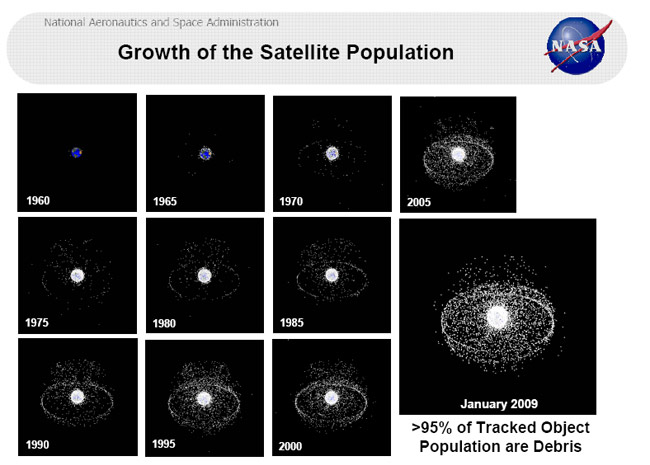Making the rounds is yet another homebuilt high-end high-altitude balloon launch, notable primarily because it uses high-end 3-D cameras and received sponsorship. Lofting things on a ballon = not new-- but pushing the technology limits on what an amateur can loft on a balloon = new.
Moving to satellites, Brian (my O'Reilly editor), who would probably shoot me if I didn't mention "buy our satellite book", pointed me to a neat effort by Brown University. Their cubesat effort is on about the same timescale as mine-- aiming for a 2014/2015 launch. Their payload goal is to loft a xenon strobe that would be visible from Earth. Much like me, they're releasing all their docs and detail as open source as they go. Worth checking out for Makers: http://browncubesat.org/
And now space debris. There's junk in space, and it can present a hazard for spacecraft. There's an upcoming DARPA June 26th conf on space debris:
http://www.informationweek.com/news/government/info-management/232901038

... and general details on their earlier 'Catcher's Mitt' debris removal ideas so you can be up to date on the current state of the art. Why is this relevant to picosatellites? While a picosatellites might encounter space debris, our small size, heartiness, and short lifetime make it a possibly not worth accounting for. Low odds. However, picosatellites are an excellent testbed for trying out orbital debris concepts. This is why I'm happy to be advising the Capitol College's VelcroSat orbital debris removal prototyping picosatellite effort.
I mentioned that, in addition to being clobbered by debris, satellites also have to endure solar activity. The upcoming Space Weather Enterprise Forum is a 1-day small event in DC discussing space policy and mitigating damage to satellites due to solar activity. It is high-level discussion, i.e. CEOs and division heads and congresscritters speak, though it's common for post-docs and such to be in the audience. I'll be going, I go each year.
I'm wrapping up the sequel to DIY Satellite Platforms, this time on Surviving Orbit and testing your satellite with home-built test gear. A bit more engineering and less spacey, it should be available this summer. All the O'Reilly books are available as eBooks or print copies, and I hope you check out the link and possibly buy a copy, so we can keep this Maker series going.
Until next week,
Alex
Building the Project Calliope home satellite to convert the ionosphere to music





Comments